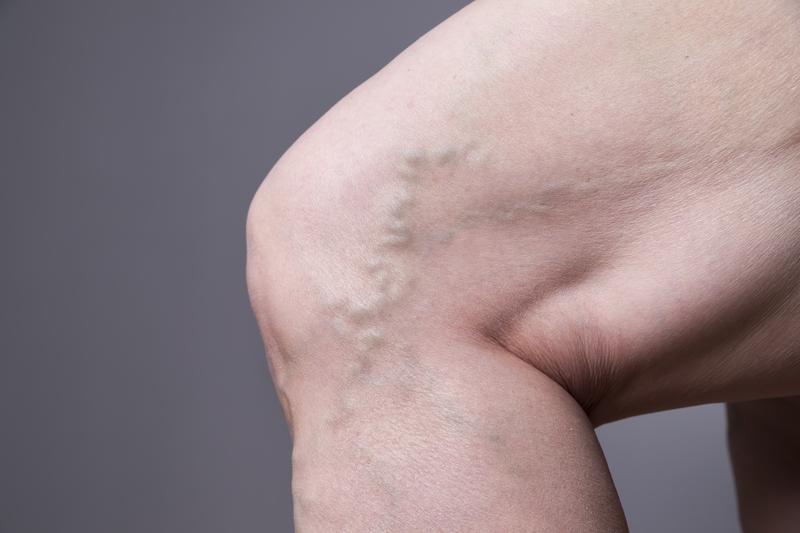Before getting varicose veins, the biggest concern they pose to you is probably their impact on your appearance, especially on your legs. Once you have them though, you realize that they’re more than just unsightly. They’re downright uncomfortable. Fortunately, there are things you can do to manage your varicose veins.
Exercise
Everyone knows exercise is important. If you have varicose veins though, how you exercise matters just as much. Certain exercises put extra strain on your veins and may actually damage them further. One of the best ways you can exercise with varicose veins is to simply walk. The gentle muscle contractions that occur when you walk help massage your veins and promote the return of blood to your heart. Biking and swimming are other good exercise activities you can engage in. The idea is to target the leg muscles, specifically your calves, and get the blood moving through them. Make sure you warm up before you exercise. If you’ve had recent treatments, ask your doctor how soon you should be exercising after them.
Change Your Diet
A heart-healthy diet is important to promoting the health of your veins and managing varicose veins. If you aren’t eating a healthy, balanced diet, it’s time to make a change. Adjusting your diet to be more healthy helps promote a healthy weight, which will take some of the pressure off of the veins in your legs. This makes it easier for them to effectively return blood up to your heart. A healthy diet also gives you better sources of essential vitamins and minerals, and helps reduce your salt intake. This further protects the health of your veins. Don’t forget to stay hydrated. Drinking enough water helps keep your blood thin enough for it to easily move throughout your circulatory system.
Seek Treatment
Unfortunately, varicose veins don’t just go away on their own. You’ll likely need to seek treatment to resolve them at some point. Varicose vein treatments are often minimally invasive. Laser treatments, for example, don’t require any surgical procedures. Other procedures close the veins off using various methods or remove the diseased portion of vein altogether. That may sound concerning, considering the role veins play in your circulation. Human bodies tend to be wonderfully adaptive though. Your body has multiple blood vessels it can use to transport blood, and if there isn’t one where it needs to be, you can form a new one.
Dress Smart
How you dress does more than just impact how people perceive you. It also impacts the health of your veins. If you ever needed an excuse to avoid wearing tight clothing or that pair of heels, you now have it. Tight clothing can restrict blood flow, putting unnecessary pressure on your veins. If you already have varicose veins, that makes it even more difficult to return blood to your heart. Compression stockings are the exception to this. These specialized socks are specifically designed to promote healthy circulation in your legs by compressing the muscles in your legs and providing extra structural support to the veins there. Heels, on the other hand, have been found to increase your risk of developing varicose veins and worsening those already in existence. You’re better off wearing shoes with good arch support, nursing shoes, or stylish flats as an alternative.
Avoid Prolonged Sitting or Standing
You may have heard that sitting is the new smoking. It makes sense, since prolonged periods of sitting compromises blood flow. Excessive or prolonged standing isn’t good for you either though. Veins typically have to work against gravity to return blood to your heart. If you have varicose veins, they’re already struggling to do their job properly. Prolonged sitting or standing makes it more difficult to circulate blood. As such, it’s important to take breaks from time to time. Change position, move around, take a break, and maybe do some light exercise. This helps get the blood moving and reduces some of the strain on your veins.
Elevate Your Feet
Perhaps one of the easier things you can do to take the strain off of your varicose veins is to elevate your feet. It’s a lot easier to transport blood when your veins aren’t fighting gravity the whole time. Elevating your legs can help reduce both the discomfort you’re experiencing due to varicose veins and the associated swelling. This, coupled with the improved circulation, can help prevent the formation of ulcers that are associated with vein disease.
It’s important to take steps to manage your varicose veins. Exercise, eating a healthy diet, getting treatment, being smart about what you wear, avoiding prolonged periods of sitting or standing, and elevating your feet all help you manage varicose veins and promote proper vein health. As an added bonus, you’ll likely see improvements in other areas of your life as a result as well.
Read this next: What Are the Medical Consequences of an Unhealthy Diet?



